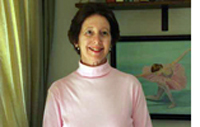By Sheila Orysiek
 SAN DIEGO — One of the unique aspects of dance among the art forms is that it affords us the opportunity to observe not only its fruition, but also its creation. It willingly lends itself to a public birth: the dancers, the choreographer and the audience all participating in the process.
SAN DIEGO — One of the unique aspects of dance among the art forms is that it affords us the opportunity to observe not only its fruition, but also its creation. It willingly lends itself to a public birth: the dancers, the choreographer and the audience all participating in the process.
John Malashock is a prolific creator of modern dance and periodically invites the public to join him and his dancers for a studio series to observe the actual “on the spot” creative process. This takes place in their beautiful facility in a building devoted to dance in what was once the San Diego Naval Training Center. Though the studio is large the setting is intimate; chairs set around the wall – nothing between the audience and the dance.
Next year, April 2011, the San Diego Museum of Art will host an exhibition “Dreams & Diversions – 250 Years of Japanese Woodblock Prints.” In the Museum’s Copley Auditorium, Malashock Dance will present “The Floating World” a dance complement to the exhibition. Visual projections are planned in collaboration with filmmaker Tara Knight.
On April 11, 2010, Malashock and seven (the eighth was injured) dancers in practice clothes continued on with the birth of this work which had begun the previous evening – only a few phrases of dance had been choreographed. The theme is “of a journey” – dancers on tour – after a performance – feeling the exhaustion of body and spirit – and the effort to reconnect the two. In pairs – man/woman – back to back – sometimes spinning laterally away from one another only to return, but never connecting visually or emotionally.
The music was a legato violin adagio with the dancers at times working into the music and at times dancing through it. After adding additional dance phrases and several times running through it from the beginning, it was interesting to watch the dancers incorporate the movement immediately into muscle memory. Though they could only glimpse one another, their individual internal metronomes began to synchronize. As the choreographic vision flowed from Malashock to the dancers – they became the repository of his memory.
Then Malashock began to change the vision of the choreography by breaking it up by gender; men started with the second section while women started with the first original section – the movement coming together with the final section and the dance took on the aspect of a visual fugue. Another change had the women begin their movement a phrase behind the men. Further experimentation changed the number of dancers to only two pairs, which narrowed the focus and design from a symphonic palette to a four “voice” aria. Each change altered the dance considerably, each with its own integrity.
After the rehearsal/performance, Malashock answered questions from the audience and explained that between these initial creative sessions and the premiere next year, everything was open to change; the music, the choreography, the dancers.
On the chairs upon which we sat were cards with some of Malashock’s perceptions of his work:
“For me, the music that I choose to choreograph to is one of the most important decisions because it is so integral in shaping the movement I create.”
“Fact: The music you will hear tonight might not be used in “The Floating World” production. By changing the music, your reaction to the piece will inevitably change as well.”
“I have a ‘style’ of choreography or movement vocabulary, but I am always trying to expand that vocabulary to create something unique to the project I am working on.”
“Fact: Dancers and staff often nickname certain signature moves, creating a vocabulary unique to Malashock Dance. Here are some examples: The Drunken Elephant, Shot in the Back, Find the Hold, Kill the Bug, and Icky Creepy.”
“Research of a new work’s subject matter plays a subtle, but important, role. The information sits in the back of the brain and is drawn upon subconsciously.”
“Fact: I have traveled to Japan several times and have traveled extensively throughout California. Those travels and my performance touring experiences will definitely be in my mind as I choreograph.”
A further “on the spot” studio view of this work in progress is scheduled for May 15-16, 2010.
*
Orysiek is a dance critic based in San Diego. She may be contacted at orzak@aol.com